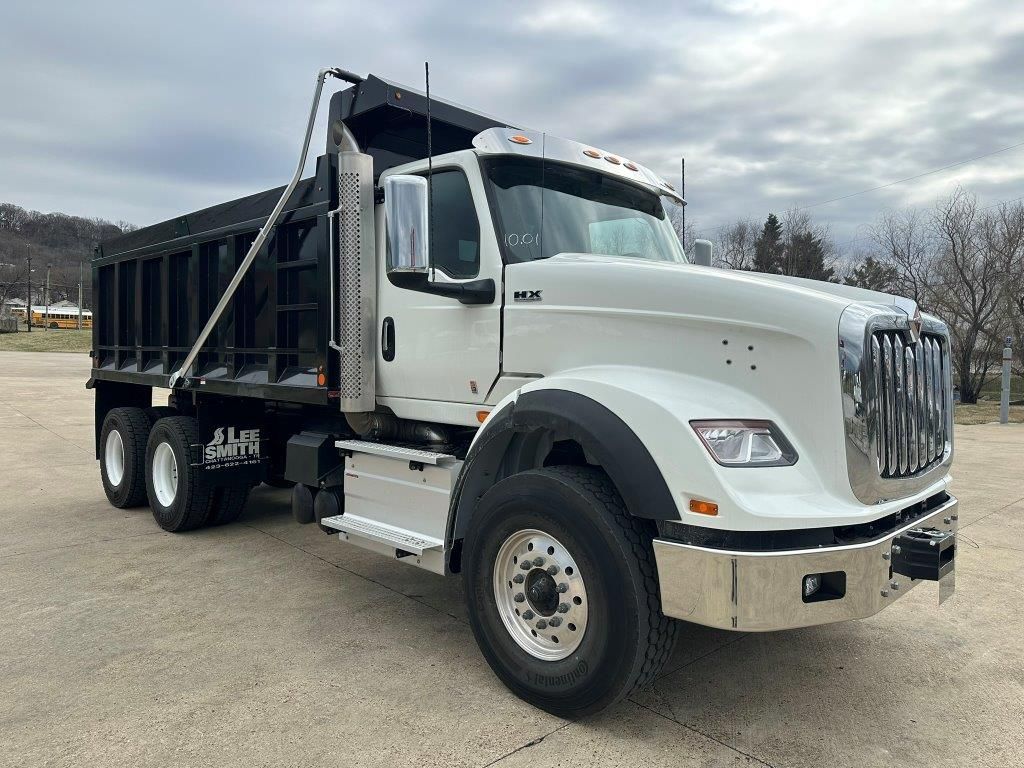LEE-SMITH IS NOW A PART OF THOMPSON TRUCK GROUP. LEARN MORE >>
Blog
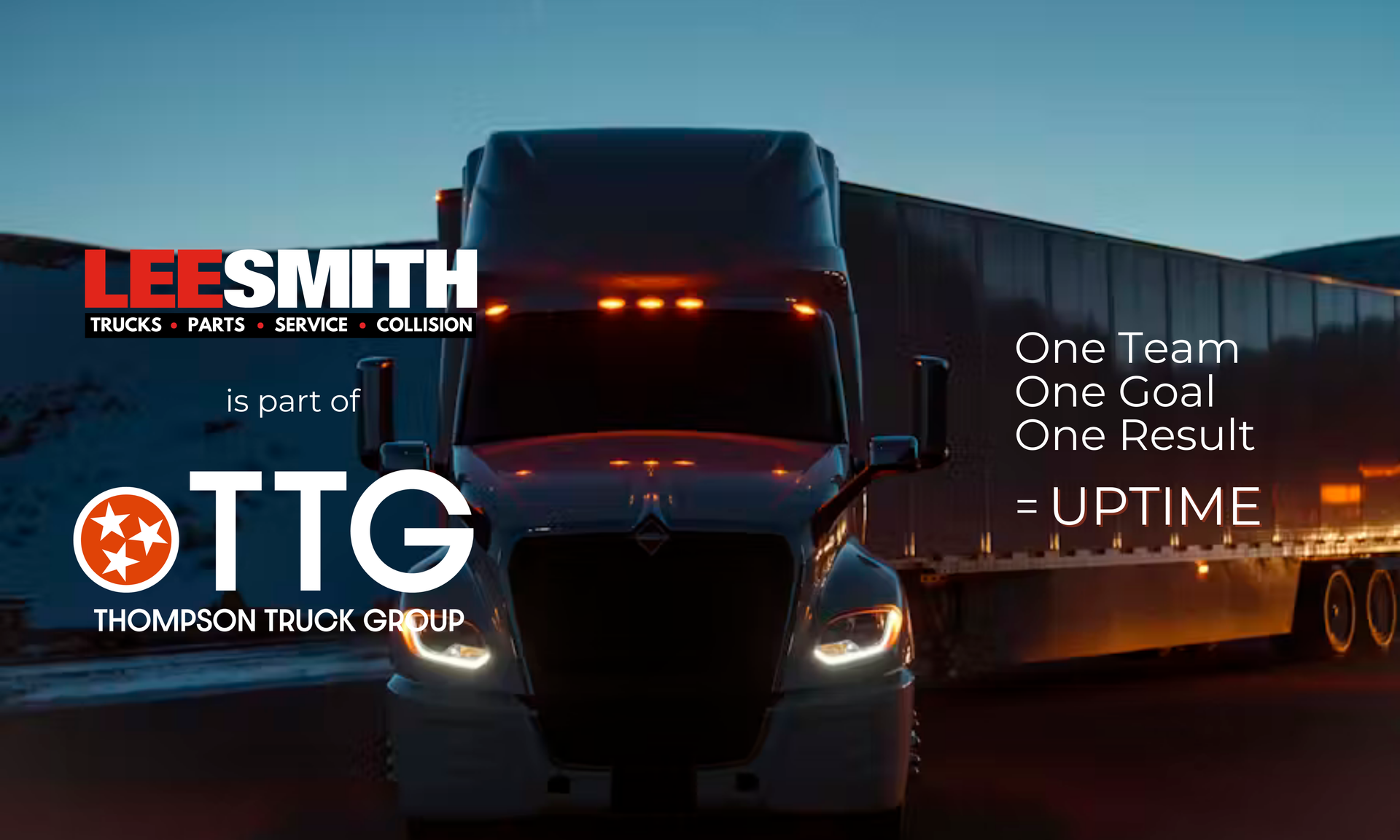
April 3, 2025
For Immediate Release NASHVILLE, Tenn. — April 3, 2025 — Thompson Truck Group (TTG), a division of Thompson Distribution and a premier provider of commercial truck sales, parts, service, rental, and leasing solutions, proudly announces the acquisition of Lee-Smith, Inc. (Lee-Smith), a trusted leader in the trucking industry for over 53 years. The transaction was officially completed on February 28, 2025.
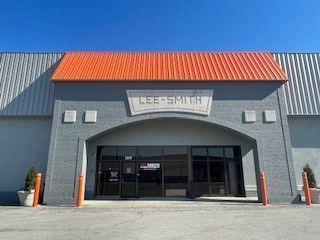
March 26, 2025
At Lee-Smith, we believe in the power of community and the importance of giving back. When the Austin Hatcher Foundation for Pediatric Cancer approached us about a special project—one that would not only raise vital funds but also provide a transformative experience for young cancer patients—we knew we had to be a part of it. Together with the patients and staff at AHF and Factory Five Racing, our collision center team helped bring a dream to life: the creation of a one-of-a-kind MK4 Roadster that would go to auction in support of families affected by pediatric cancer. A Foundation with a Mission The Austin Hatcher Foundation was established in 2006 by Dr. James and Amy Jo Osborn after losing their son, Austin Hatcher Osborn, to an aggressive form of pediatric cancer. Instead of letting their grief define them, they turned their pain into purpose, founding an organization dedicated to erasing the effects of pediatric cancer for both the diagnosed child and their family. The Foundation’s impact is profound. In 2023 alone, they provided $4,727,798 in valued clinical services, with a total of over $30,712,912 in services since inception. These services include mental and behavioral therapy, educational programs, and innovative initiatives like their Industrial Arts Therapy Program—all provided at no cost to families. More Than a Car—A Symbol of Resilience The Industrial Arts Therapy Program is a hands-on STEAM (Science, Technology, Engineering, Arts, and Math) initiative that helps children develop technical skills, build confidence, and find a therapeutic outlet through working with tools and materials. To bring this program to life in an extraordinary way, the Foundation partnered with Factory Five Racing to create a Factory Five MK4 Roadster from the ground up. Children in the program actively participated in the build, learning the intricacies of engineering, mechanics, and teamwork. However, they needed a trusted body shop to complete the car’s stunning exterior. That’s where we came in. Lee-Smith’s Role: Precision and Passion Our collision center took on the challenge of prepping, sanding, and painting the Roadster to perfection. The fiberglass body was meticulously prepared, ensuring every surface was flawless. Our skilled team then applied a striking Kindig Modern Classikk "Black Ice" paint finish—turning the vehicle into a true showstopper. With our state-of-the-art paint booth, expert technicians, and a commitment to excellence, we ensured that this Roadster wasn’t just a car—it was a masterpiece. Every detail was handled with care, knowing that this build carried more significance than just horsepower and aesthetics. It represented resilience, strength, and the unwavering spirit of the children and families the Austin Hatcher Foundation serves. A Record-Breaking Auction After months of dedication from all involved, the custom-built MK4 Roadster went up for auction on Bring A Trailer. The results were nothing short of phenomenal—the Roadster sold for an incredible $100,000! Every dollar raised directly supports the Foundation’s mission to erase the effects of pediatric cancer and optimize the quality of life for young survivors and their families. Our Commitment to Community At Lee-Smith, we are deeply committed to supporting our community beyond our day-to-day operations. Over the years, we have contributed to numerous causes, from local schools and shelters to hospitals and museums. Being part of this special project with the Austin Hatcher Foundation reinforced our belief that when we come together as a community, we can make a lasting impact. We are honored to have played a role in this journey and look forward to more opportunities to support the incredible work of the Austin Hatcher Foundation. If you're looking for ways to contribute, we encourage you to visit www.HatcherFoundation.org to learn more about their mission and how you can get involved. Together, we can drive hope forward—one project at a time.
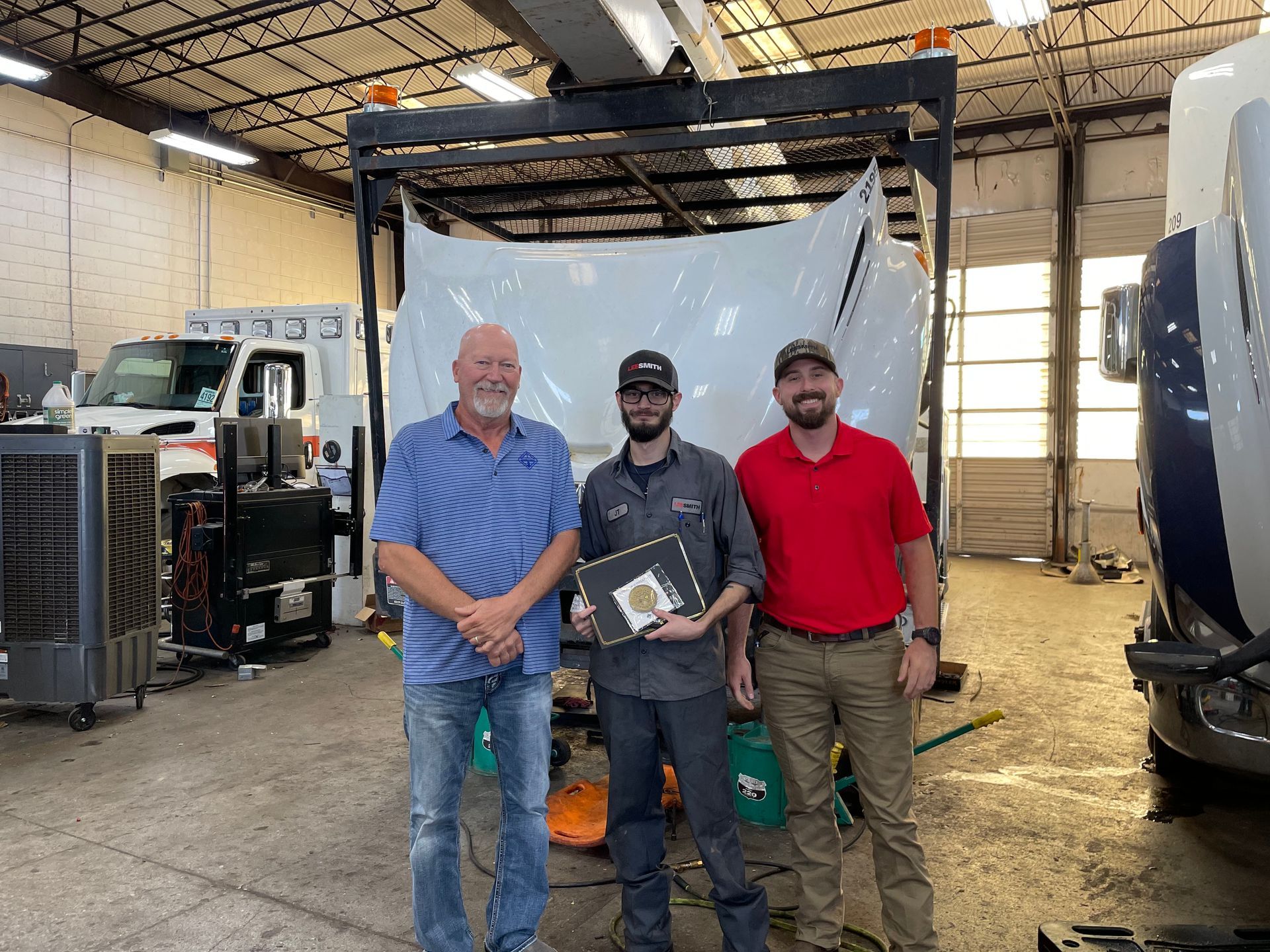
November 26, 2024
As we approach the season of thankfulness, we at Lee-Smith, want to take a moment to reflect on the things that truly make our workplace special. While we are proud to offer high quality commercial trucks, parts, service, and collision repair, it's the relationships and the sense of community we've built that we're most thankful for.
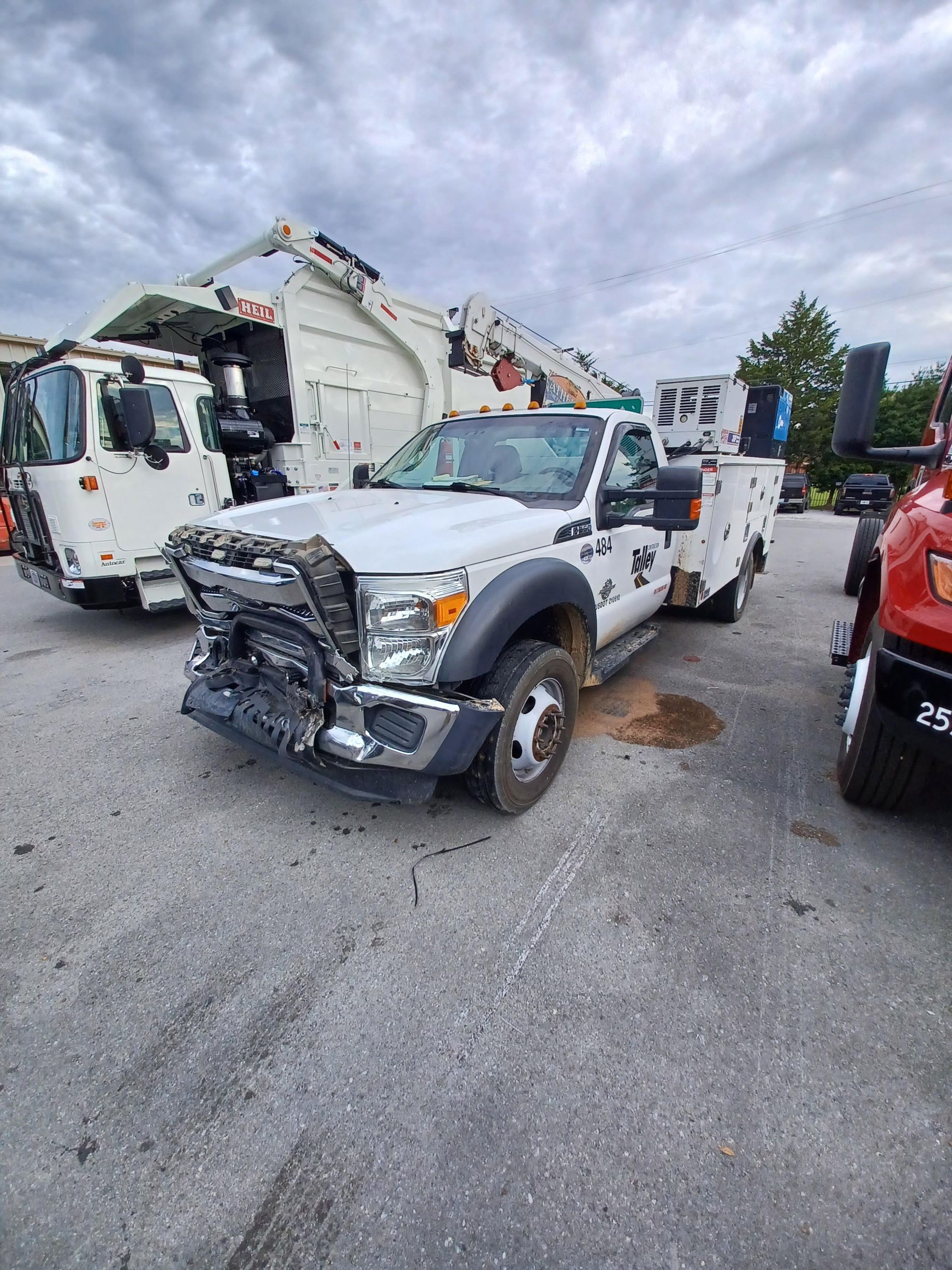
October 18, 2024
We all know that at some point, we’re going to have to deal with truck repairs. Understanding the collision repair process can really help ease concerns if you find yourself in that situation. Whether you’re going through insurance or paying out of pocket, knowing how to choose a dealership you can trust begins with understanding how to get an accurate estimate. This is where the body shop estimator comes in. A good body shop estimator is highly trained and an excellent communicator. We sat down with our own body shop estimator Jason to give you an inside look into what it means to craft a detailed estimate and what goes into the day to day of one of the most important team members of the Collision Center. A well-crafted estimate is your first step to getting back on the road, so how does a body shop make an estimate?
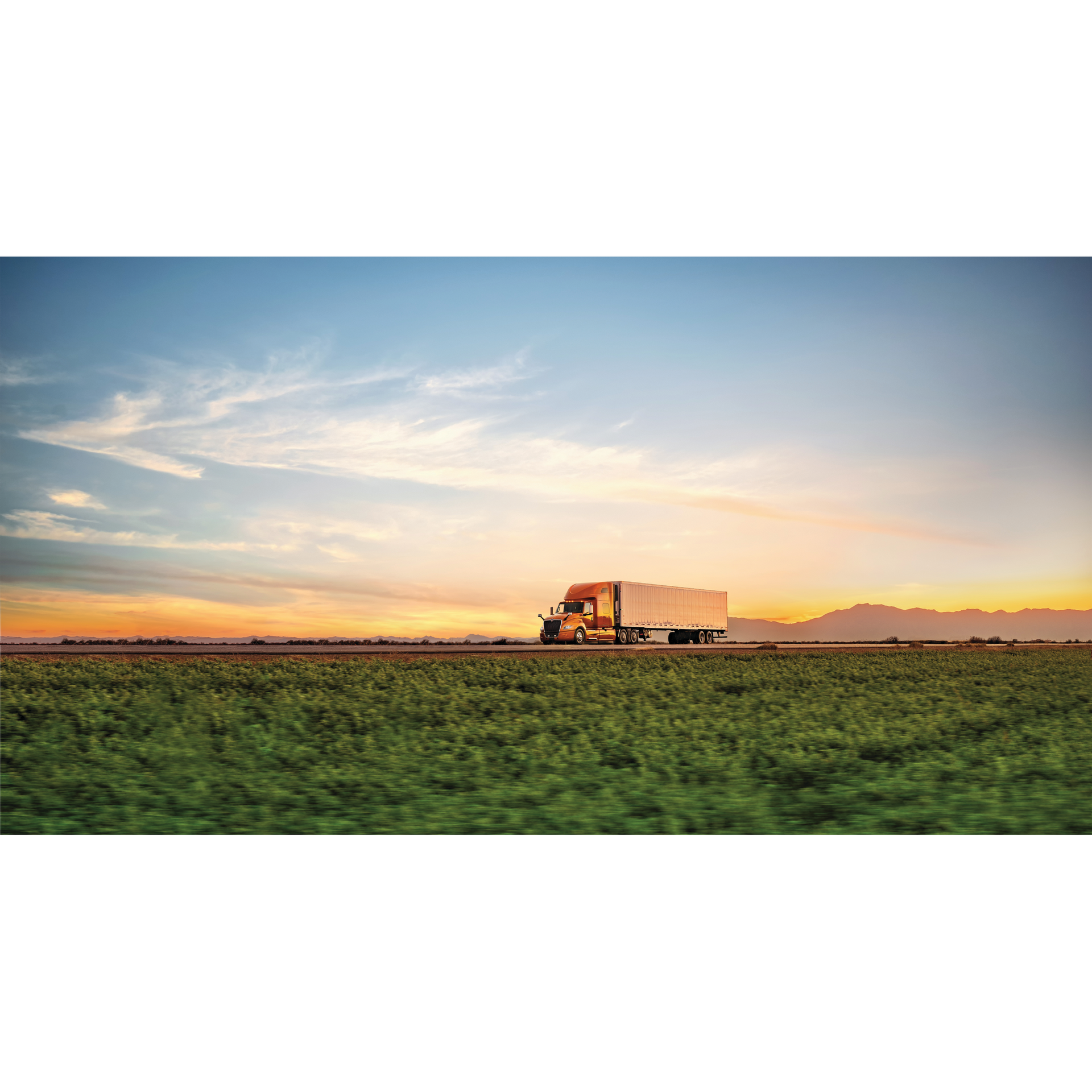
By Lebron Landreth
•
September 16, 2024
It may feel a little too early to start preparing your truck or equipment for winter, but trust us—it’s not. In the South, we can experience three seasons in one day, and maybe even all four! So, while you’re enjoying those crisp fall mornings, keep in mind that the frost and cold are just around the corner. And when it comes to owning a truck, nothing is more important than being ready for the challenges winter can bring. To help you stay ahead of the game, we’ve put together a handy checklist of the most common things you can do to reduce the chances of an untimely winter breakdown. Follow these tips, and you’ll be prepared no matter what kind of winter weather comes your way. Winter Truck Prep Checklist: Check Coolant Levels Ensure your coolant is properly mixed to prevent freezing when temperatures drop. A 50/50 mix of antifreeze and water usually works best. Inspect Charging and Starting Systems Cold weather puts a strain on your truck’s battery, so make sure it’s up to the task. Check the charge and clean the terminals. Don’t forget to test the alternator, too. Drain Water Separators & Look Over Fuel Filters Diesel trucks are especially susceptible to fuel gelling in winter. Drain your water separators and inspect fuel filters. It’s a good idea to add a winter fuel additive and anti-gel to your tank, and carry extra fuel filters just in case. Check Tire Pressure and Tread Depth Cold air can reduce tire pressure, so keep an eye on it. Also, make sure your tire tread depth is deep enough to handle snow and ice. If you’re expecting snow, inspect your snow chains and keep them handy. Inspect the Brake System & Service the Air Dryer Winter driving means more frequent braking on potentially slick roads. Inspect your brakes and service the air dryer filter to remove moisture that can freeze in the lines. Look Over the Engine Compartment Check for any obvious issues, such as leaks or worn belts. Make sure your block heater is working properly, so your engine can handle those frigid starts. Winterize Your Wiper Blades and Washer Fluid Visibility is key in winter. Consider switching to winter wiper blades and use washer fluid that’s rated for freezing temperatures. Test Lights, Heating, and Defrosters Shorter days and bad weather mean you’ll rely more on your lights. Check all headlights, taillights, and turn signals. Ensure that the cab’s heating system is functioning and that defrosters are ready to handle frosty mornings. Prepare a Winter Emergency Kit Winter driving is unpredictable, so be prepared with a well-stocked emergency kit. Pack essentials like: Blanket and extra clothing Tools and a flashlight First aid kit Non-perishable food and water Jumper cables, ice scraper, and snow brush 10. Train Drivers for Winter Driving Even the best-prepped truck still needs a capable driver behind the wheel. Make sure your drivers know how to handle winter conditions, from using tire chains to managing slick roads with caution. Conclusion: Be Prepared, Stay Safe By checking off this list now, you’ll save yourself from dealing with unexpected breakdowns or delays once winter really sets in. The unpredictability of southern weather can catch you off guard, but when your truck is properly prepared, you can face it head-on. Winter readiness isn’t just about maintenance; it’s about safety—both for you and everyone else on the road. Stay safe, stay ahead of the cold, and get your truck ready for winter today!
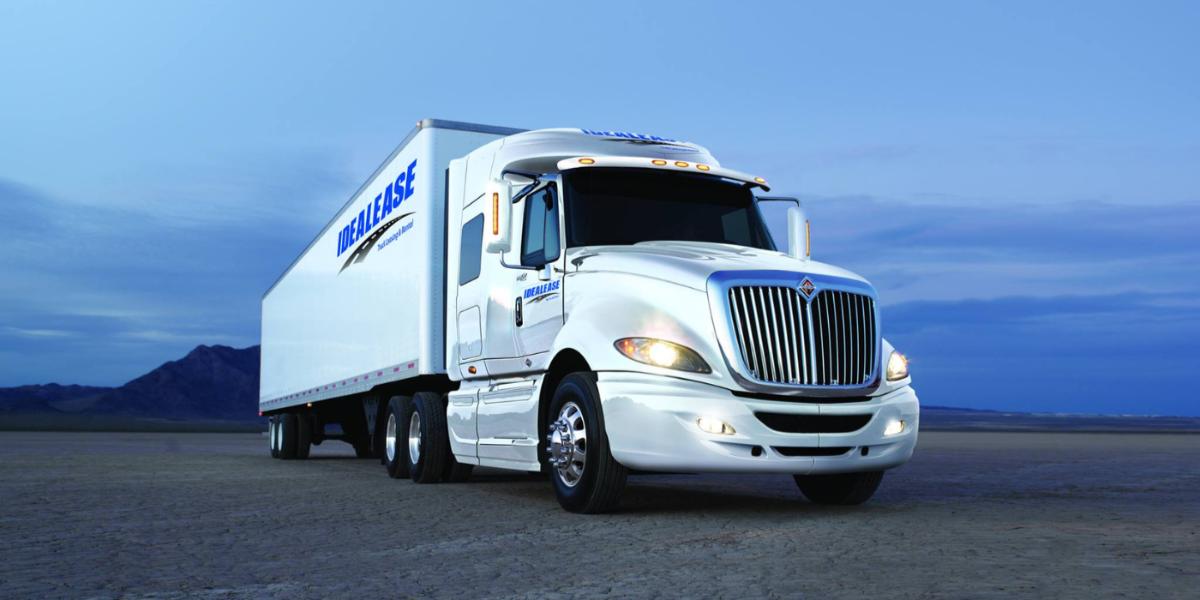
By Dayton Shepard
•
August 22, 2024
A client friend asked me to explain what happened to our industry during the emission change that occurred in 2010. Specifically, what happened to International, but also the other diesel engine manufacturers during that time. With a perspective that encompasses more than four decades in the transportation business, I found it to be an interesting request. The changes to diesel engines started well before 2010. It's hard to believe today but in 1969, the Department of Health, Education and Welfare named Chattanooga the “worst city in the nation for particulate air pollution”. Fortunately, in 1970 the Clean Air Act was passed. It was the beginning of emission standards and by 1974 regulators established the first standards for diesel engines. When I started in the trucking business diesels were dirty, very dirty. At the beginning of my career in the mid-seventies, Detroit Diesels were two-stroke, black smoke belching, oil leaking, boisterous engines. Cummins was introducing their 855, a 14 liter engine that would be their mainstay for the next 25 years, and International’s DT466, originally a tractor engine, was the leading medium duty diesel. All were controlled mechanically; electronics were nowhere to be found. By 1985 EPA set emission standards for NOx (Nitrogen Oxides) and PM (Particulate Matter) with heavy duty diesel engines. Every time the standards changed, parts on the diesel engines needed to change. In 1994 as the new regulations went into effect, electronic controls, changes to pistons, injectors and other changes to diesel engines became necessary. Most people look at the nine years between rulemaking and the deadline to comply as a reasonable amount of time to modify the engine design and bring it to market. But in fact, this was all new engine technology for the industry. They needed time to experiment, test, fail, try again, improve and succeed. It is a very expensive and time consuming process. Electronic controls were new, and the industry was experimenting with exhaust gas recirculation. Nine years went by and the engines that were introduced were not ready. They had durability and reliability issues and while some were better than others, every diesel engine manufacturer, Cat, Cummins, Ford, GM, International, Paccar, and Volvo suffered and with them, the dealers that sold them and the customers that bought them. In 2006 the EPA mandated a reduction of Sulfur in diesel fuel and particulate filters were ushered in during 2007. Some regulations were being phased in, but all diesel engines need to be fully compliant by 2010. In 2008 Caterpillar announced it was exiting the on-highway engine segment. It is also interesting to note that because the regulations were to change in 2010 many customers chose to bring their purchases forward into 2009. Engine manufacturers continued to produce 2009 compliant engines until the last possible date in December of 2009. As a result, many of the purchases in the first half of 2010 were fitted with 2009 certified engines. It was not until the second half of 2010 that engines with the 2010 certification began to be sold to customers. Most engines were then equipped with cooled EGR, DEF injection, and a diesel oxidation catalyst that required diesel fuel to be injected into the exhaust stream. Once again manufacturers had big problems with these new components. Among some of the more notable problems, EGR coolers were failing, and sticky piston rings caused a condition called bore polishing. The entire industry had angry customers for several years. Reliability was sub-par, and the customers paid the price. Truly everyone was working with new unproven technology and engines were rushed to market. While it was bad for all engine manufacturers, it was a terrible time for International. The darkest days of International’s history were under the direction of their CEO and Chairman, Dan Ustian. Dan had come up through the ranks in the company as an engineer in the engine group. He was convinced that with enough cooled EGR he could eliminate the need to inject DEF into the exhaust stream. Theoretically, it could work but it was a complex engineering challenge and there were space constraints as it all needed to be tucked under the hood of the truck. As the team of engineers toiled and experimented the clock kept ticking. 2010 grew near, but Dan forged ahead and as he did, stories began to be leaked about trouble with the project. It was reported that anyone who disagreed with Dan was quickly discharged. In March of 2007, International started to incorporate smaller MaxxForce engines into the product lineup. The 11 and 13 liter MaxxForce engines were added to the product line in 2010. To say they did not perform as advertised is an understatement. The engines never gained EPA certification. After doing almost irreparable damage to Navistar and their customers, Dan Ustian was let go in August of 2012. Later Ustian was charged with defrauding investors at Navistar. The charges were settled without Ustian admitting guilt, but he was the first executive to ever have a portion of his separation pay clawed back by the SEC as part of the settlement. Ustian was also barred from ever having a position as an officer or director of a publicly traded company. Lawsuits came from every direction; many were not solved until recently. Due to the fiasco, Navistar lost hundreds of millions of dollars, their reputation and the trust of many customers. New management came in to deal with the problems and they did their best to resolve the issues and repair the damage. Troy Clarke replaced Ustian as COO. He certainly had his hands full and has never received the credit he is due for keeping the company from not completely imploding. In the end Navistar found a suitor. They were sold to Traton, a subsidiary of Volkswagen AG, in 2021. Traton Group is a global powerhouse in commercial trucks. The company is a combination of Scania, MAN, VW Commercial Bus and Truck, and now Navistar. They are one of the largest truck, bus and engine manufacturers in the world. They have made huge investments in Navistar and have already introduced the S13 & T14, a new 13 liter engine and 14 speed automated manual transmission. This engine was a “clean sheet” design with dual goals of being extremely efficient and meeting the 2027 EPA emissions. Since the purchase, Navistar truck models have received numerous improvements, and an all new truck cab project is underway. It is an exciting time at Navistar and a great comeback story. While there is a happy ending for Navistar and their customers, this story is a cautionary tale. The underlying issue is that the EPA has pushed increasingly difficult regulations on the industry and the industry has been unable to keep up. With every release of new emission levels, it has taken several years of development thereafter to achieve the levels of durability and reliability customers expect and deserve. Should we anticipate anything different in 2027? The engine manufacturers are better prepared today than they were in the past to deal with the engineering challenges brought about by changing emission regulations. But if the past is prologue, some will get it right and others will have trouble. Let's ring the bell and celebrate the improvements to clean air that are the result of the efforts of engine manufacturers since 1974. Once the 2027 EPA rules are in place, carbon monoxide will have been reduced by 85%, hydrocarbons reduced by 96%, NOx reduced by 99.13% and particulate matter reduced by 99.17%. Those are amazing numbers that do not receive enough publicity. It is something in which our industry should take great pride. Finally, just like diesel engines have changed, so has Chattanooga. It has become one of the most environmentally conscience cities in the nation. Gone are the steel mills spouting toxic clouds of contamination. Today the city and surrounding area is known for its natural beauty, clean rivers and clean air. It’s become a hotbed for hikers, climbers, and watersports. It is a great example of the improvements our country has made. Dayton Shepard © 2024 All rights reserved.
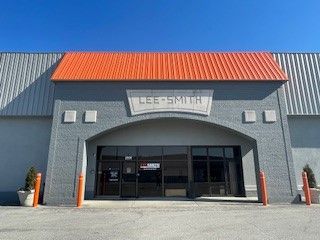
July 25, 2024
Welcome to Lee-Smith! While we are well known as a new and used truck dealership representing the manufacturers Ford, International and Isuzu, we have so much more to offer. So, what exactly does Lee-Smith do? The short answer is: Everything trucks and trailers! The long answer is best told through a quick digital tour. When you swing by Lee-Smith the first thing you’ll notice aside from our size is our bright orange awnings. It’s how you know you’re at the right place. Being large in size means we have the space to do a variety of jobs. Some for the manufacturers we represent and some for all makes and models.
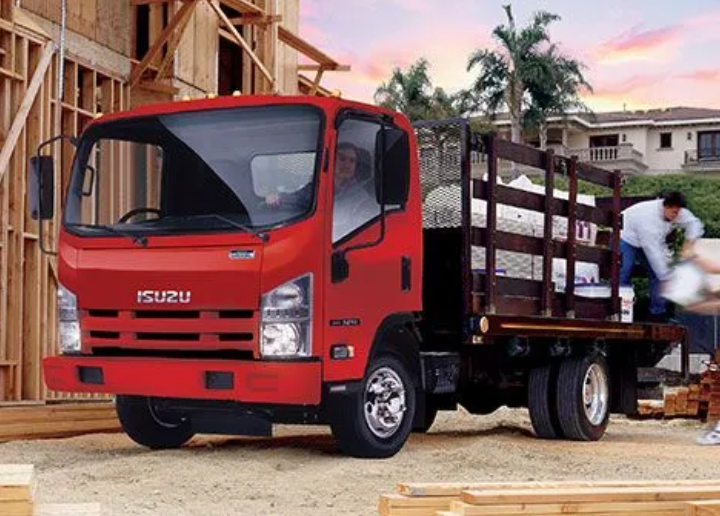
By Lee-Smith
•
July 11, 2024
It’s landscape season and landscape crews are hard at work this time of year. With that hard work comes the potential for new wheels! But before you rush out and purchase a new landscape truck for your business, take time to consider your options from all angles. Because we know your business needs are unique, we’ve assembled some areas of consideration to help you narrow down your choices. SIZE OF TRUCK BED AND CAB - Ask These Questions First! How much weight do I need to be able to haul? Add up the total weight of all the tools, mowers, fuel cans, blowers, trimmers, etc to get this total. This number will affect which class truck best matches your usage needs so be sure to consider all factors. How much flat floor space is needed? The easiest way to determine this is to create a 14’ x 92” rectangle using string, tape or line (this is standard landscape body flat floor dimension). Arrange your equipment to fit in the space, as if you were entering from the narrow end. Note that the front lockable box comes in two variations and most put the deck of the first mower under this two-foot ledge. If you have excess, you can save money through a shorter wheelbase chassis. If you need more space - no worries, expand the length up to 18 feet (this will require a longer wheelbase). What is my crew size? The price difference between a crew cab and a standard cab is less of a factor as resale values are higher on crew cabs and the overall price is $80 a month (based on five-year term finance in most cases). But if your lot is space-limited or your crew size is 2-3, the standard cab is best. SAFETY When deciding between open versus enclosed trucks, make sure to factor in theft deterrent. Models from Box Van and Vanscape feature an internal dovetail while Lawn Box features an external ramp and gate. Another consideration in the realm of safety is debris management. Which can become more of an issue depending on what you are hauling, how far you need to go, and if the truck will often be taken on the highway. ACCESS If you are consistently in need of side access or multi-use models, an open lawn care body may be the best fit for you. But that’s not to say there aren’t good models with double swing and single swing side doors for pallet loading. It’s just a matter of how convenient you need that side access to be. ADVERTISING A huge perk of a box van is its ability to act as a mobile billboard for your business both at the job site and on the road. This built-in advertising will save your ad budget a pretty penny and is guaranteed to make the rounds around your local community. PURCHASE TIMELINE The question of how soon you need to purchase a new landscape truck will be an important factor in the buying process. Open lawncare bodies are measured in days, but box vans are measured in weeks or in some cases, months. Still feeling unsure? Never fear, the Lee-Smith sales staff is available to answer all your questions and work with you to ensure that your next truck meets your business needs. We highly recommend an in-person meeting or a video call. The Sales Team is available Monday-Friday for appointments: (423) 622 - 4161

May 28, 2024
Aging workforce. One of the most critical challenges we face in the transportation industry. With a majority of drivers moving steadily towards the retirement age, managers and companies are facing challenges. Recruitment has become more difficult and the appeal of the trucking industry isn’t quite reaching the younger generation, like it used too. The question becomes, how can managers and companies utilize the workforce they have without burning out the veterans? While the solution is complex, there are things to be done. Below we’ve listed some steps you can take to ensure the longevity of your fleet while retaining safety. Continuous Training. We’d all like to think we know how to do what we do, but skills can get rusty and safety regulations and technology can change. Implementing continuous training for your drivers no matter their age or experience is a great way to keep skills sharp. Regular Driver Evaluations. Conducting driver evaluations on an annual or semi-annual basis encourages drivers to stay up to date on procedures and maintain required capabilities. This also provides you with a way to assess your fleet and assure that everyone is operating at peak performance. If you identify knowledge gaps early, you can guide your drivers to improvement before those gaps increase. Listen & Communicate . Opening the door for active and honest communication builds trust within your team and allows you to keep tabs on issues before they spiral. Prevention is often the best course of action and open communication contributes to that. The issue of the aging workforce is an ongoing problem but with regulations, vigilant monitoring, and consistent training, you can protect yourself and your fleet while investing in everyone’s future.
Lee-Smith, Inc.
2600 8th Avenue | Chattanooga, TN 37407 |
423.622.4161

